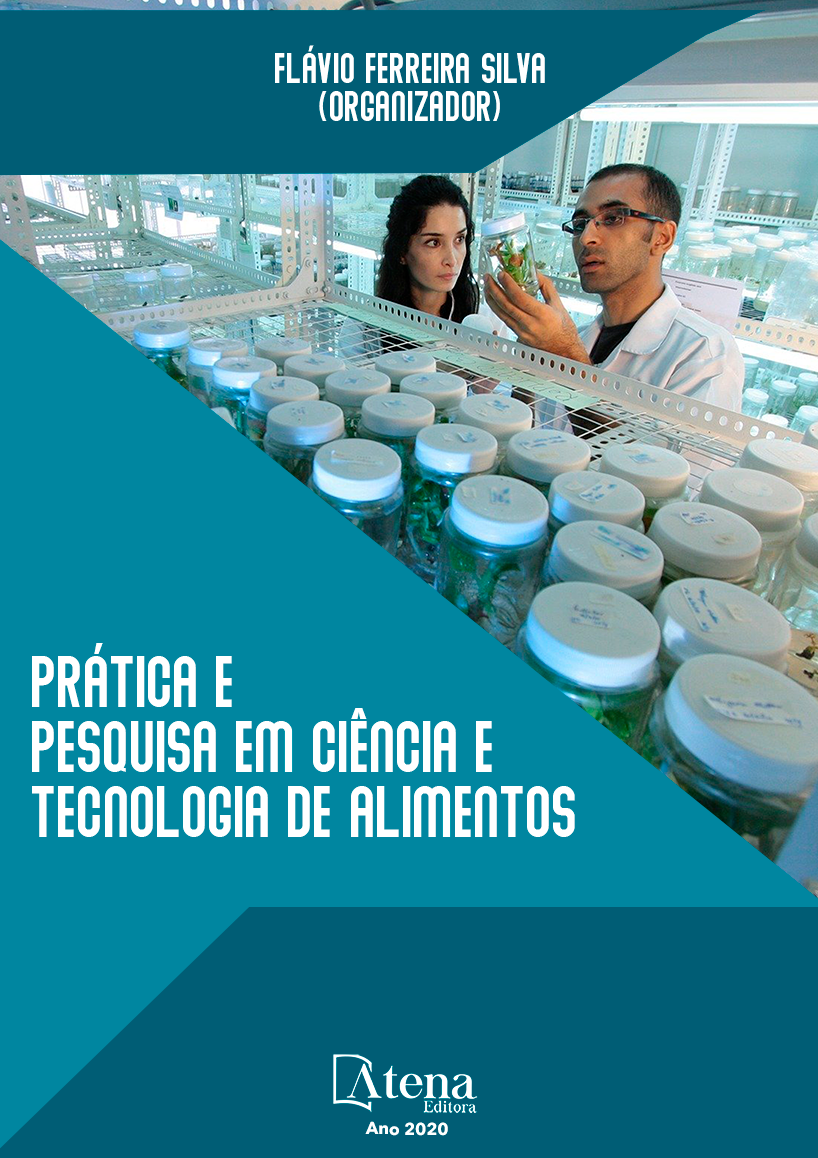
ANÁLISE SENSORIAL DE SUCOS MISTOS DE ACEROLA COM ÁGUA DE COCO, LARANJA E HORTELÃ
Cada fruta tem o seu teor de
nutrientes e isso pode ser utilizado para
melhorar as características nutricionais de
determinados sucos. Este trabalho teve como
objetivo analisar sensorialmente os sucos
mistos de acerola com água de coco, acerola
com laranja e acerola com hortelã em relação
aos atributos intenção de consumo e sabor.
Foram analisadas três amostras de suco
(acerola + água de coco, acerola + laranja
e acerola + hortelã). Participaram do estudo
30 provadores que após os testes sensoriais
avaliaram os sucos utilizando uma escala
hedônica. O experimento foi realizado na
Universidade Estadual do Maranhão (UEMA),
São Luís – MA. Foi observado que 66,7% dos
provadores sabiam o que significava análise
sensorial. A análise sensorial foi realizada em
uma população com faixa etária predominante
de 22 a 25 anos (40%), seguida pela de 18 a
21 anos (33,3%). Na intenção de consumo, observou-se que 23% dos provadores
responderam que tomariam sempre o suco (acerola + laranja). A maior rejeição foi
o suco (acerola + água de coco), no qual 13% dos provadores disseram que nunca
tomariam. Observou-se, na aceitação do sabor, que 30% dos provadores disseram
que gostaram extremamente do suco (acerola + laranja) e 17% dos provadores
desgostaram extremamente do suco (acerola + água de coco). Conclui-se que os
sucos mistos (acerola + laranja) e (acerola + hortelã) têm uma boa aceitação em
relação a intenção de consumo e ao atributo sabor; já o suco (acerola + água de coco)
não tem uma boa aceitabilidade entre consumidores.
ANÁLISE SENSORIAL DE SUCOS MISTOS DE ACEROLA COM ÁGUA DE COCO, LARANJA E HORTELÃ
-
DOI: 10.22533/at.ed.1392010027
-
Palavras-chave: Aceitabilidade sensorial, Malpighia emarginata, Processamento de alimentos.
-
Keywords: Sensory acceptance, Malpighia emarginata, Food processing.
-
Abstract:
Each fruit has its nutrient content and this can be used to improve the
nutritional characteristics of certain juices. This work had as objective to analyze the
mixed juices of acerola with coconut water, acerola with orange and acerola with mint
in relation to the intentions of consumption and flavor attributes. Three samples of
juice (acerola + coconut water, acerola + orange and acerola + mint) were analyzed.
The study was attended by 30 testers who, after the sensorial tests, evaluated the
juices using a hedonic scale. The experiment was carried out at the State University
of Maranhão (UEMA), São Luís - MA. It was observed that 66.7% of the tasters knew
what sensory analysis meant. Sensory analysis was performed in a population with a
predominant age range of 22 to 25 years (40%), followed by 18 to 21 years (33.3%). In
the intention of consumption, it was observed that 23% of the tasters replied that they
would always drink the juice (acerola + orange). The biggest rejection was the juice
(acerola + coconut water), in which 13% of the tasters said they would never drink. It
was observed in the taste acceptance that 30% of the tasters said they liked the juice
very much (acerola + orange) and 17% of the tasters disliked the juice (acerola +
coconut water). It is concluded that mixed fruits (acerola + orange) and (acerola + mint)
have a good acceptance in relation to the consumption intention and flavor attribute;
already the juice (acerola + coconut water) does not have a good acceptability among
consumers.
-
Número de páginas: 15
- Junara Aguiar Lira
- Aline Ferreira Silva
- Keneson Klay Gonçalves Machado
- Claudio Belmino Maia
- Raimundo Calixto Martins Rodrigues
- Luiz Junior Pereira Marques
- Sylvia Letícia Oliveira Silva
- Gislane da Silva Lopes


